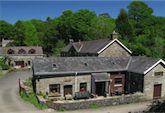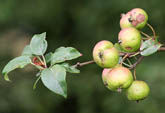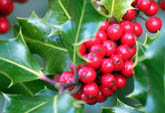The wild animals are busy feeding and stocking their larders and new birds arrive from the continent to replace the ones that have left. October means good walking over crackling leaves and spot the squirrel competitions. The many different types of tree that have been planted at the farm over the centuries make for a dazzling array of colours as Autumn gets into full swing. Check the Welsh holiday weather for October.
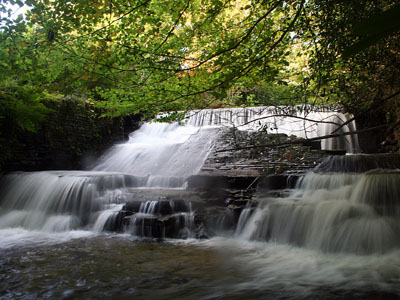
The Weir on the River Clydach at Plas Farm
This was built to raise the level of the River Clydach such that it could be channelled off (see the hole in the bank on the opposite side of the river) onto a tar lined wooden trough (which has rotted away) which ran through the walled garden, past the back of the holiday cottages and out onto the water-wheel that was once part of Bwthyn Y Saer holiday cottage. You can still see some of the tar on the walls.The Weir on the River Clydach at Plas Farm
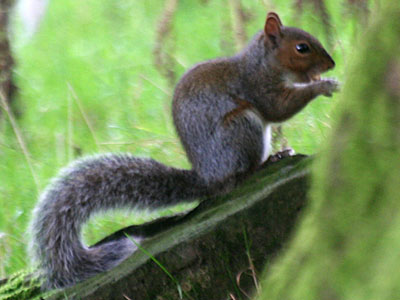
Grey Squirrel Sciurus carolinensis
October is a great time to see grey squirrels around the farm, stocking up for winter. Their winter fur is dense and silvery grey with a brown tinge along the middle of the back. Lots of them live in the trees that surround the holiday cottages. The grey squirrel was introduced to Great Britain in the mid-19th century and after many releases it began to increase dramatically at the beginning of this century.Grey Squirrel Sciurus carolinensis
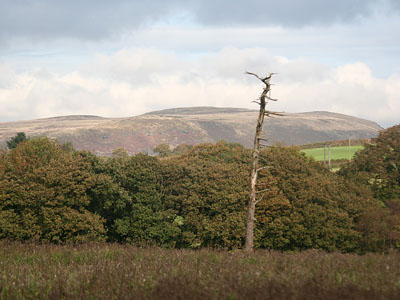
Mynnydd Allt-y-grug from the Lodge Field
This October landscape was taken from the 'lodge field' in front of the holiday cottages. The foreground is dominated by a patch of withering thistles. In the middle distance, the Welsh Oaks are starting to take on their autumn colours. In the distance, the dramatic ice-carved western side of the Swansea Valley enjoys the autumn sun. This barren rocky mountain is Allt-y-grug, which translates as The Hillside of Heather.Mynnydd Allt-y-grug from the Lodge Field
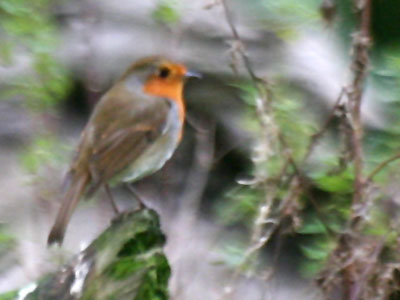
Robin Erithacus rubecula
The robin is the UK's favourite bird - with its bright red breast it is familar throughout the year and especially as the leaves start to fall off the trees. Males and females look identical, and young birds have no red breast and are spotted with golden brown. Robins sing nearly all year round and despite their cute appearance, they are aggressively territorial and are quick to drive away intruders. The robin in this picture had some fairly strong words to say after I had taken its picture.Robin Erithacus rubecula
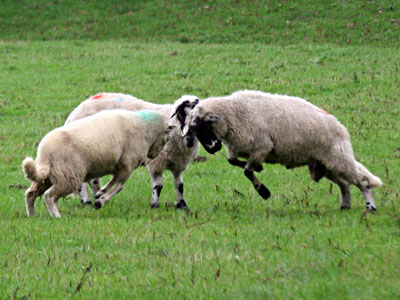
Rams Fighting on the River Field
This picture was taken on the River Field, which is alongside the farm drive, and visible from the holiday cottages. It shows two young rams fighting by way of head butting, with a referree looking on. The rival rams back off, then charge, meeting head to head with a loud and slightly sickening thud. Whilst it is a shocking spectacle, it is a natural behaviour which has carried over from when sheep ran wild. It helps to sort out the social order within the flock i.e. which ram gets all the ewes. They head butt, poke with horns, shoulder push, block, and mount eachother until one of them decides enough is enough. The fights can be ferocious and according researchers, most male skeletons have fractured neck vertebrae, broken while butting other males. Larger males with bigger horns win these battles more often, and therefore mate more frequently. Head butting among rams is highest during the rutting season (Autumn) which preceeds the onset of heat in ewes.Rams Fighting on the River Field
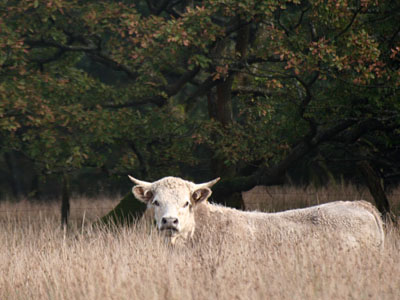
Cow in Rush Pasture
This was taken on the rush pasture on the mountain behind the holiday cottages. The leaves of the Welsh Oaks that line the field have started to turn brown.Cow in Rush Pasture
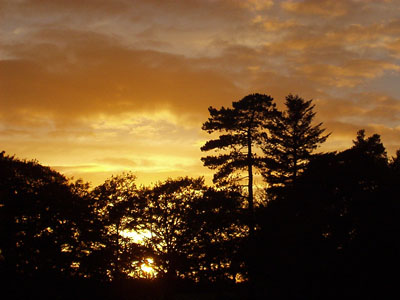
'Red Sky at Night' Sunset at Plas Farm
This picture was taken from the bottom of the farm drive, looking westwards. It is possible to see the silhouette of a Scotch Pine towering above the broadleaved oaks. Does "red sky at night" really mean "shepherds delight"? The hues we see in the sky are due to the rays of sunlight being split into colors of the spectrum as they pass through the atmosphere and ricochet off the water vapor and particles in the atmosphere. The amounts of water vapor and dust particles in the atmosphere are good indicators of weather conditions. They also determine which colors we will see in the sky. During sunset the sun is low in the sky, and it transmits light through the thickest part of the atmosphere. A red sky suggests an atmosphere loaded with dust and moisture particles. We see the red, because red wavelengths (the longest in the color spectrum) are breaking through the atmosphere. The shorter wavelengths, such as blue, are scattered and broken up. When we see a red sky at night, this means that the setting sun is sending its light through a high concentration of dust particles. This usually indicates high pressure and stable air coming in from the west. Basically good weather will follow.'Red Sky at Night' Sunset at Plas Farm
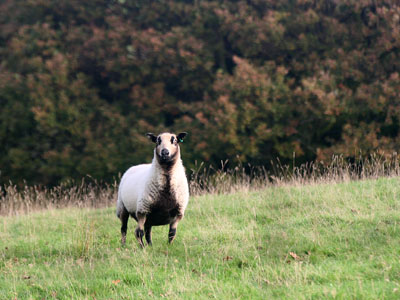
Badger Faced Welsh Mountain Ewe
The Welsh Mountain Badger Face is a color variation of the Welsh Mountain. It is an ancient Welsh breed which was once common in the Welsh Mountains. Number so this breed fell during the Middle Ages when the cloth trade demanded a white wool. Numbers are now on the increase. The main type is known by Torddu which means blackbelly but there is also a rarer Torwen which is the reverse coloration, black with a white belly. The Torddu variation have a distinctive broad striped face with a black band from jaw to belly and extending to the underside of the tail. The main fleece varies from pure white to light tan. Rams have dark spiral horns and the ewes are polled (hornless). They lamb easily, produce plenty of milk and strong lambs with plenty of "get up and go". Ewes fed mainly on grass produce high quality lamb, offering flavour, taste, succulence and unbeatable eating quality.Badger Faced Welsh Mountain Ewe
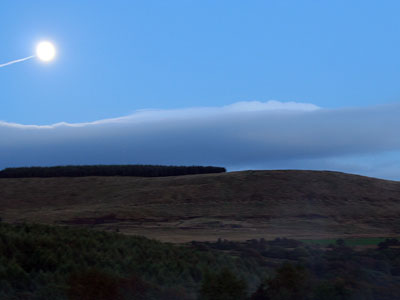
Moonlit Mynydd Marchywel
This picture was taken from Plas Road, which runs past Plas Farm. The trail from an aeroplane can be seen next to the moon. The main flight path between London Heathrow and the United States crosses this mountain. It is possible to watch them taking off on teletext in your holiday cottage and then nip outside twnety minutes later, look at the mountain and see the plane - on route to New York perhaps. The summit of the mountain is marked by three prehistoric funerary and ritual stone circles. Walking on a moonlit night in October is magical - mist rising from the fields, owls hooting and your cosy cottage awaiting your return. Your holiday cottage is 492 feet above sea level, the summit of the mountain is at 1,371 feet, the aeroplane probably at around 20,000 feet and the moon is 1,263,123,362 feet away!Moonlit Mynydd Marchywel
